Drafting
Enhance your legal drafting process with an AI assistant that provides a suite of tools to create, revise, and better understand your content.
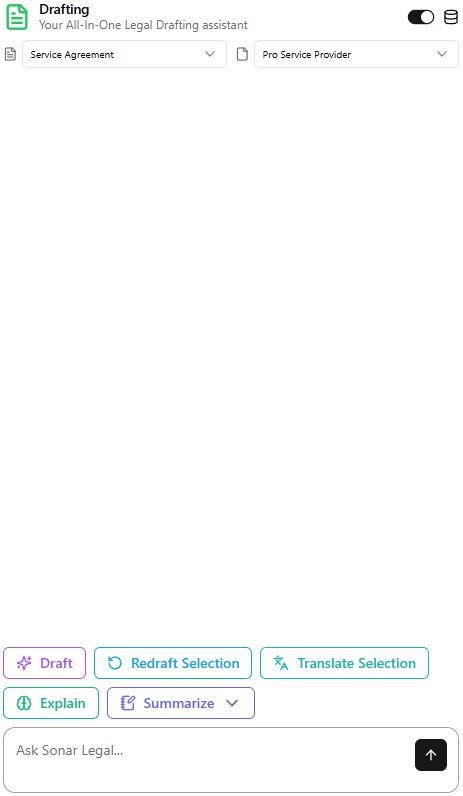
Top Bar Controls
- Contract Type: Sonar Legal automatically determines the type of contract based on your document’s content. However, you can manually adjust the contract type at any time if necessary.
- Representing Party: Choose the party you are representing. This selection helps refine the suggestions provided by the system, ensuring they align with your specific role.
- Knowledge Base Toggle: This option is enabled by default and grants you access to the comprehensive Sonar Legal knowledge base. Our knowledge base contains over 50,000 handpicked, jurisdiction-specific clauses to support your drafting process.
Knowledge Base Toggle: Enabling the knowledge base may result in slower response times.
Chat Input
Ask questions or request explanations about the legal implications of clauses, all while using your current document as context.
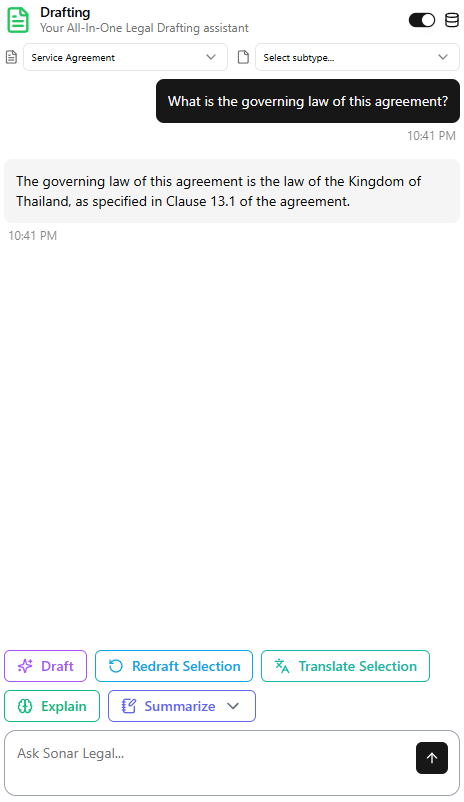
Action Buttons
Draft
Generate a new clause by providing detailed instructions, such as the type of clause and your party preference. Optionally, you can receive two separate suggestions: one generated with the assistance of the knowledge base and one generated without it.
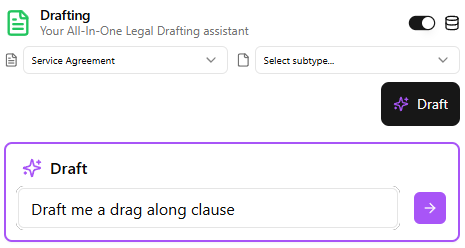
Once you receive a response, you can choose to insert the generated clause either at your cursor's location (Insert at Cursor) or at a location designated by Sonar Legal as optimal (Insert).
You can specify whether the clause is inserted as a tracked change or as a normal, untracked insertion by using the toggle at the top of the suggestion card. If you opt for a tracked change, you will be prompted to enter the name of the person making the change. Select your name for internal review or your organization's name for external communications, according to your policy.
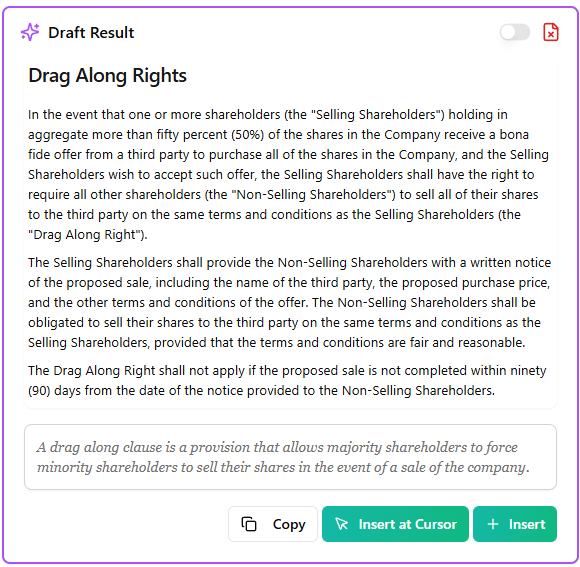
Redraft
Revise an existing clause by first selecting the clause(s) you wish to change. You will then be prompted to provide detailed instructions for the redraft. Optionally, you can receive two suggestions: one generated using the knowledge base and one generated without it.
Selection Required: Attempting to use this feature without first selecting a clause will trigger an error.
Once you receive a response, you can apply the redrafted clause directly in the document by clicking Replace.
Similarly, you can choose whether the replacement is applied as a tracked change or as a normal (untracked) replacement by using the toggle at the top of the suggestion card. If you opt for a tracked change, you will be prompted to enter the name of the person making the change. Choose your name for internal documents or your organization's name for external communications, based on your policy.
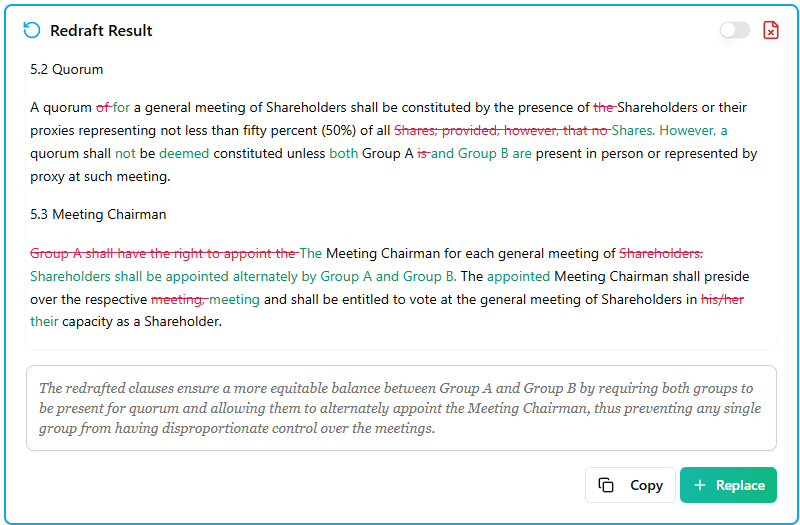
Translate
Translate a selected clause by specifying the target language into which it should be translated. By default, if the selected clause is written in a language other than English, it will automatically be translated into English. Conversely, if the clause is already in English, the system will default to translating it into the language of your organization’s primary location.

Selection Required: Attempting to use this feature without first selecting a clause will trigger an error.
Explain
Obtain a detailed explanation for any selected clause(s). This explanation includes the legal implications of the clause(s), identifies which party it favors, and provides examples of scenarios where this particular drafting could be decisive.
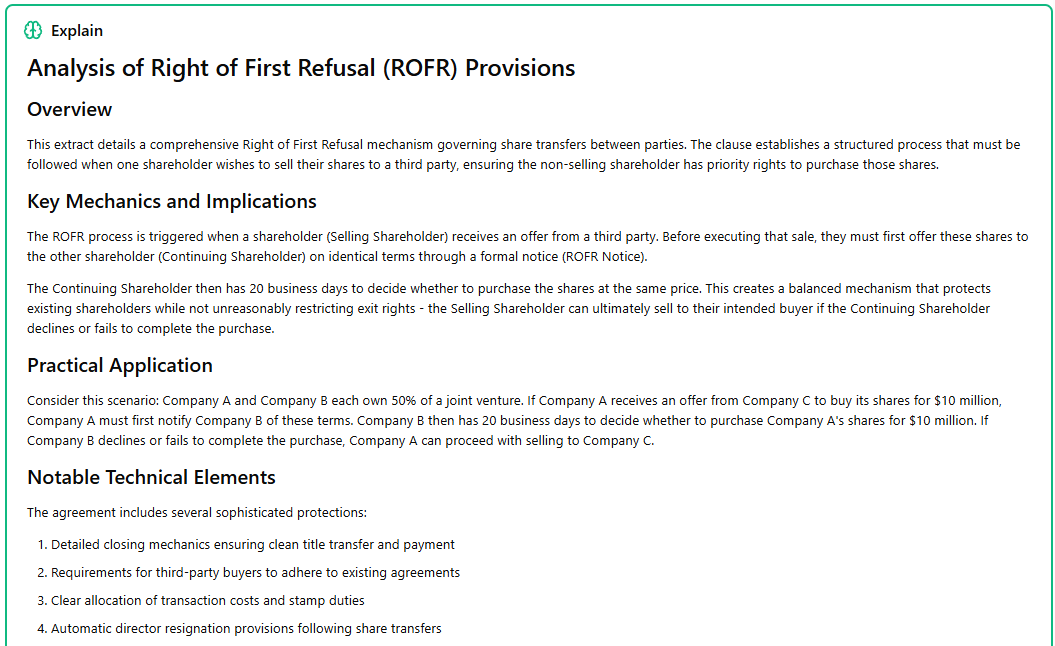
Summarize Entire Document
Create a comprehensive legal summary of your entire document. This feature generates a table with three columns: the clause name, a concise summary of each clause, and Attention Points, which highlight any issues that may require further review.
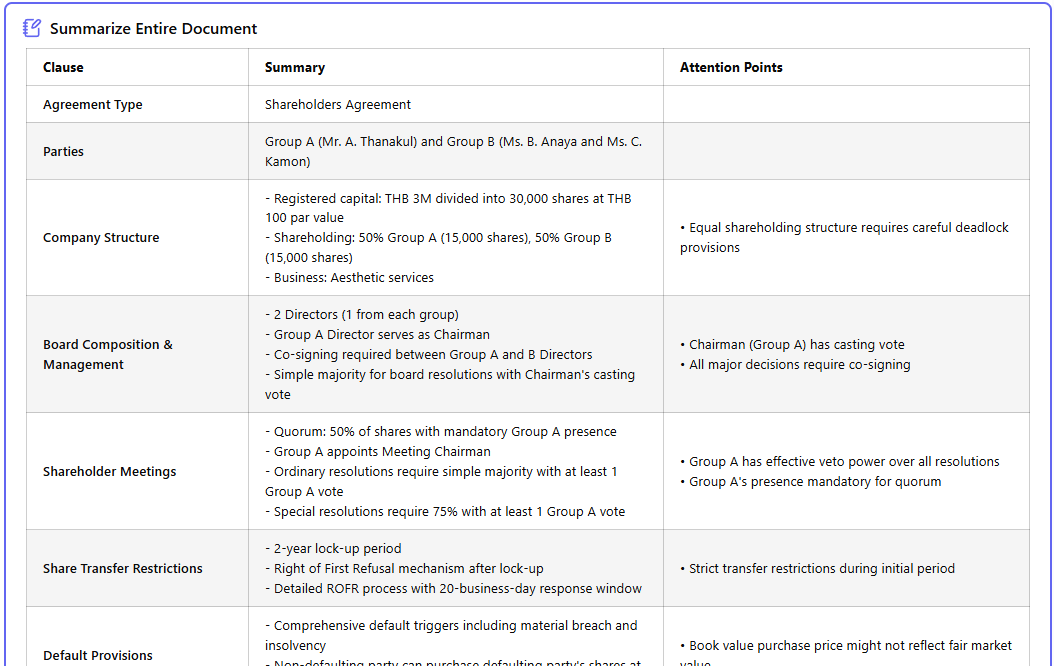
Summarize Selection
Generate a summary for a specific portion of your document. The output is presented in a table that mirrors the structure of Summarize Entire Document, with columns for the clause name, a brief summary, and Attention Points.
Minimum Threshold: Selecting a very short text may trigger an error.
Summarize Redlining
Produce a detailed summary of all tracked changes (redlining) in your document. The output is a table that displays the original text of each modified clause, the revised text, and a concise explanation of the changes made.
Track Changes Required: Attempting to use this feature in a document without active changes will trigger an error.